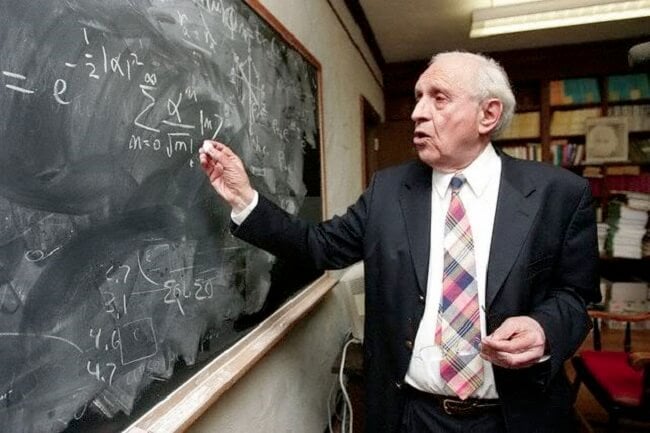- Get link
- X
- Other Apps
- Get link
- X
- Other Apps

We often talk about quantum physics, and many of us, if not all, have strained their brains in their time, trying to understand what is happening. But what could be even stranger than these strange and infinite integrals, along with the most complex mathematics that has been developing for decades?
Discovery of the Schrödinger equation
Schrödinger's differential equation is well known to young chemists and physicists around the world. In short, the equation described the movement of electrons around the nucleus in a revolutionary way and radically changed the view of the scientific community on the atomic model, and Schrödinger himself won the Nobel Prize for his discovery.
But the story behind this discovery is a bit strange. On Christmas Day 1925, Schrödinger went to a place called Arosa on a little vacation. His relationship with his wife was at an all-time low, so he decided to invite an old girlfriend from Vienna to join him. He also took with him some de Broglie tapes. When he returned from vacation on January 8, 1926, he announced the discovery of wave mechanics, a theory that describes an electron as a wave.
When asked, "how was your vacation, professor?", He replied: "I was distracted by some calculations."
It turns out the mass is not at all what you thought.
We all thought that mass is the amount of substance that an object possesses. Well, this is partly true. Unfortunately, the Higgs mechanism has other thoughts on this. He, in fact, reverses our logic. The Higgs mechanism interprets the mass of a particle according to how strongly this particle interacts with a specific field (the Higgs field, of course). Technically, everything in this world has no mass, until it interacts with this strange field. It is for this reason (and not because of its long absence on the monitors) that scientists call the Higgs boson a “particle of god”.
To better explain this theory, David Miller turned to a crowd of politicians in a very simple analogy:
“Imagine a cocktail party for political party employees who are evenly distributed around the room and talk to their closest colleagues. The ex-premier enters the room and moves around the room. All employees near her are attracted to her and accumulate around her. Since there is always a cluster of people around her, she is gaining a greater mass than usual; that is, it has more momentum and the same speed of movement. While she moves, it is harder for her to stop, and when she stops, it is harder for her to start moving again, because she needs to restart the clustering process. In three dimensions, complicated by the theory of relativity, this is the Higgs mechanism. ”
Quantum mechanics allow you to be in two places at once.
With one caveat: if you are a quantum particle. Heisenberg’s uncertainty principle and Jung’s double-slit experiment do suggest that we present a new world; these laws have shown that instead of staying in one place, something will be in a certain (x, y, z) position with a certain “probability”. Unfortunately, the uncertainty in such measurements has little effect on everyday objects, but when it comes to electrons, for example, scientists can identify areas in which electrons can be detected, but not indicate the exact position of the electron. This principle is also known as quantum superposition.
Schrödinger and his famous cat
Erwin Schrödinger may be known among quantum chemists for his revolutionary equation, but his name among ordinary mortals is often associated with a cat. In response to the so-called problem of the Copenhagen interpretation of quantum mechanics, Schrödinger came to a strange, but very interesting, mental experiment.
He presented a box containing a live cat, radioactive material, a hammer and caustic acid. If the radioactive material decays, it will cause the hammer to fall on the acid container and break it, which in turn will lead to the death of the cat. But Schrödinger said that the chances of decay of radioactive material after exactly an hour are 50%. It is logical to assume that in an hour the cat will be either alive or dead, and we will not be able to determine this until we open the box. Schrödinger himself concluded that according to quantum mechanics, the cat is both alive and dead until we open the box and find out its current state.
Quantum mechanics has become the most amazing area of science, which literally turns our view on everyday things. Although the four examples above seem interesting and understandable, one small quotation by Richard Feynman summarizes everything you need to know about this science: "I think I can safely say that no one understands quantum mechanics."
The article is based on materials .
- Get link
- X
- Other Apps
Comments
Post a Comment